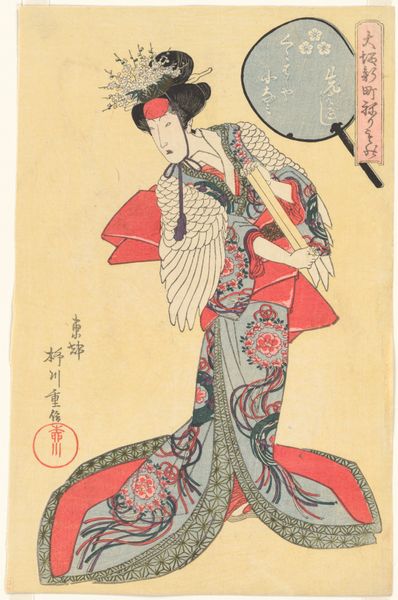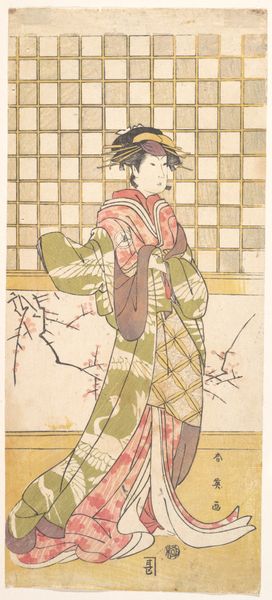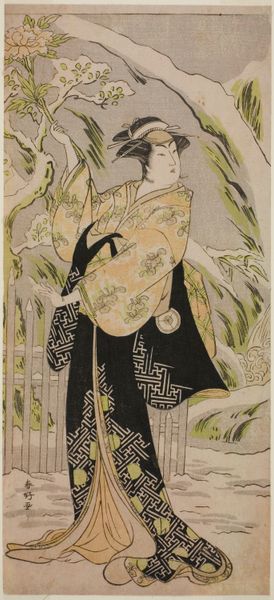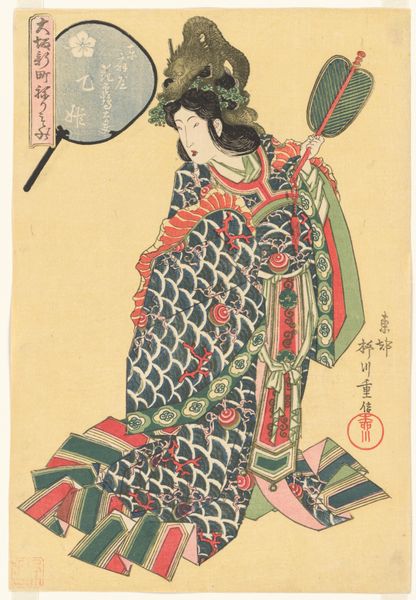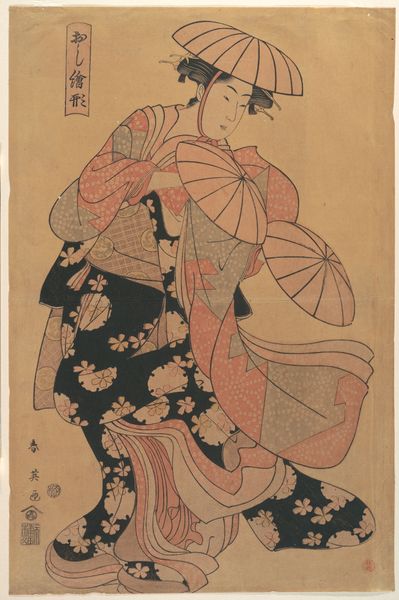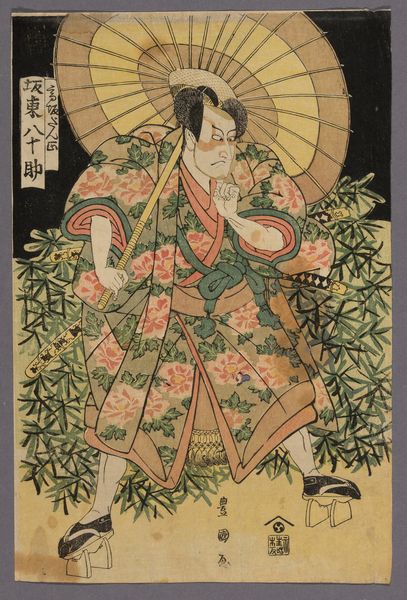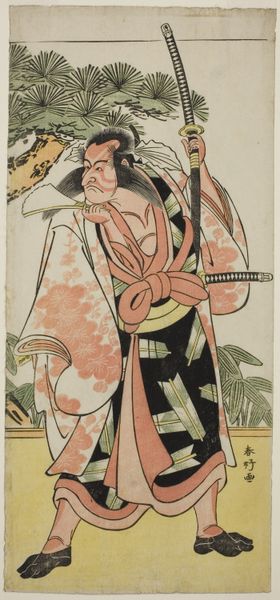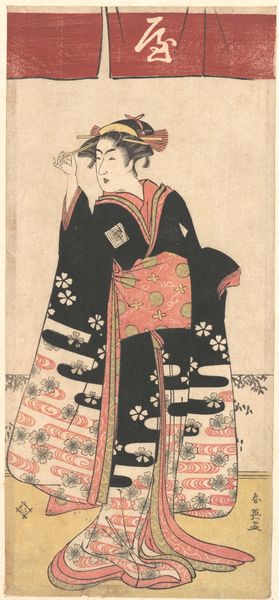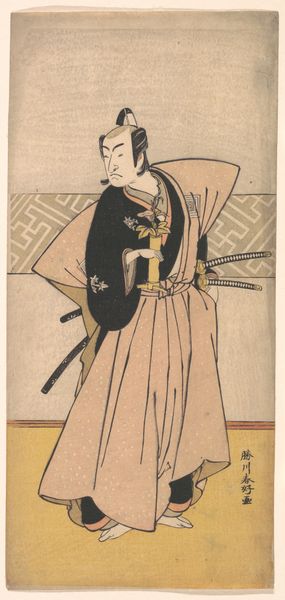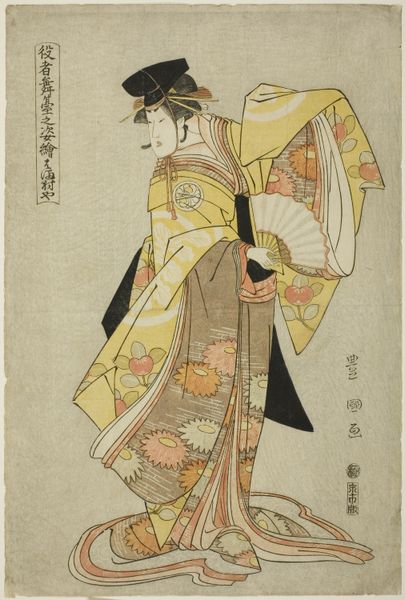
print, woodcut
#
portrait
# print
#
asian-art
#
ukiyo-e
#
figuration
#
woodcut
Dimensions: 12 15/16 x 5 2/3 in. (32.9 x 14.4 cm)
Copyright: Public Domain
Editor: Here we have Katsukawa Shun'ei's woodblock print, "Kabuki Actor Ōtani Oniji III," created sometime between 1782 and 1802. The actor's pose and intense gaze are quite striking, but what's really capturing my attention is the pattern on his kimono. What aspects of this piece stand out to you? Curator: The material elements and their production are key. Ukiyo-e prints like this were mass-produced, relying on the collaborative labor of artists, carvers, printers, and publishers, each contributing to the final product sold to a broad public. Think about the wood itself—what types of wood might have been used, and how would the choice of material have impacted the print's texture and the longevity of the printing blocks? Editor: So the process of making many copies actually democratized the art form itself? Curator: Precisely. The Kabuki theatre provided an important source of subject matter for Ukiyo-e prints. This portrait, for instance, served not just as art, but also as a commodity that reflected the growing urban culture and its consumption habits. What kind of cultural labor is involved in being a Kabuki actor in the first place, and how is that labor being represented here? Editor: It’s fascinating to consider the print as a document of both artistic and cultural production, rather than solely aesthetic expression. I never considered woodblock prints in the light of material studies. Curator: Thinking about materials and the context in which they’re produced helps us understand art's connection to a wider system of social relations. Hopefully it gives you more avenues to think about it.
Comments
No comments
Be the first to comment and join the conversation on the ultimate creative platform.
